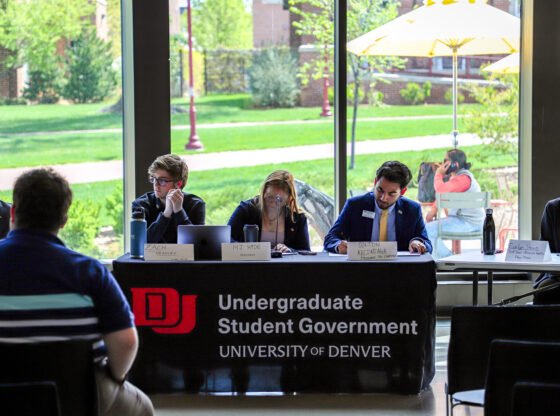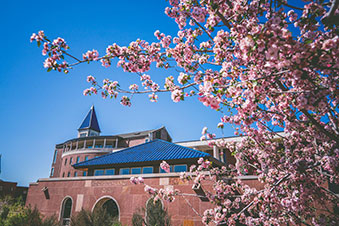Last week, the USG Sustainability Committee (SUSCOM) posted flyers at the Hydration Stations on campus announcing that they have now saved waste from a total of over 1,000,000 disposable plastic water bottles.
“I think we were all pleasantly surprised that we actually hit a million and that it’s still going,” said Dan Powell, chair of SUSCOM. “Now the ability to fill a bottle is an expectation. It used to be new and cool, but now it would be weirder for me if there was not a way to fill a bottle at a water fountain.”
The Hydration Stations are water fountains that feature a spout for filling water bottles and a counter to show how many disposable bottles have been saved.
According to Powell, the counters reset every time there is a power outage or maintenance work, so one million bottles is actually a deflated number. The countermeasures by volume, with 12 ounces of water representing one disposable bottle of water.
The Hydration Stations were first installed in the 2010-11 academic year as part of the Take Back the Tap initiative, which aimed to reduce and ultimately eliminate bottled water on campus, particularly in admissions.
“Admissions buys a lot of bottled water, and it’s really superfluous and wasteful,” said Powell. “[Take Back the Tap] was a big push, but there was a lot of push back. Admissions is open to ideas, but really it’s a price point. Single use bottles are a lot cheaper than Nalgene bottles, for example.”
However, Powell said the Hydration Stations have made it more convenient for tour groups to fill up reusable bottles.
“There are now Hydration Stations in every toured building,” said Powell. “Phase one of our project is complete, which was really cool for the seniors on the sustainability committee. Now phase two is all about the buildings that are easy to forget about.”
According to Powell, SUSCOM recently installed new Hydration Stations in the Physics Building and the Seeley G. Mudd building. Before the end of the year, they also plan to add two stations to Shwayder and two stations to Lamont.
Next year, they will add two more stations to Lamont for a total of four. Other locations may also include Boettcher West and Craig Hall.
“Hydration Stations are expensive, and we don’t want our whole budget to go toward that, so our plan is to do a couple every year,” said Powell. “Sometimes we can add a simple metal spigot, which is my favorite because it’s way cheaper. But some older fountains just aren’t made for that, so it’s cheaper to tear them out and put in new ones.”
However, Powell added that SUSCOM has not had to pay for every Hydration Station on campus.
“They’ve started adding them to new building designs, like the AAC,” said Powell. “It’s starting to get built into the system.”
According to Powell, SUSCOM also bought reusable water bottles for the Class of 2018 as the freshman gift.
“The reason people buy single use water bottles is because they’re convenient, so the idea is to make it even more convenient to refill water bottles,” said Powell. “Give people bottles they like, and make it easy to fill them up.”
Powell said that if people want a hydration station near them, they should contact SUSCOM. He added that Lamont is getting Hydration Stations this year and next because Lamont students sent emails that got passed on to SUSCOM.
“We only know what we know,” said Powell. “If there’s one missing that needs to be there, people need to tell us.”
Anyone interested in contacting SUSCOM may email Powell at daniel.powell@du.edu.











